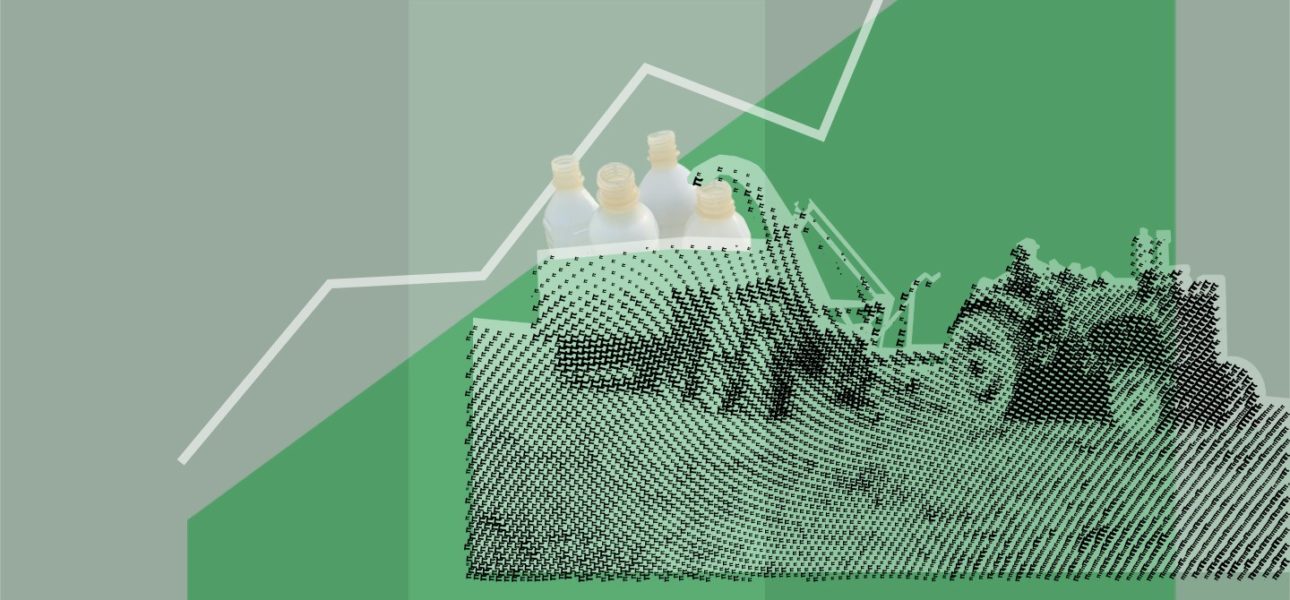Over the last decade, bioplastics have emerged on the industrial radar. Taking their place on the global market, today they are said to hold around $8.3 billion 1 of the $569 billion annual value of the plastics industry 2. On top of that, projections of their market share show it to be on the rise with an annual growth rate of around 16%. Indeed, whilst bioplastics remain highly specialised, this budding sector would seem to be forging a place for itself in the world. But not all industrial firms agree.
To better understand the stakes here, it is worth pointing out that bioplastics are not new. Whilst they have only just started to make waves, they have been around for as long as ‘conventional’ (fossil fuel-based) plastics. Their origins can be traced back to late 19th Century chemistry laboratories when inventors were tinkering around with natural polymers like cellulose. So why are we only really hearing about them now? The short answer: industry preferred fossil fuel-based plastics.
Sibling rivalry
Raw material for conventional plastics comes from fossil-fuel hydrocarbons. They are efficient, cheap and resistant. Having these characteristics is actually how they won the favour of industrials throughout the 20th Century. Bioplastics were still there; they were just hanging around in the shadows.
Unfortunately, however, the characteristics that made common plastics so favoured by industry, are now exactly what are working against them. Industrial processes using petrochemicals are a source of carbon emissions and the resistance of these polymers to biodegradation makes them problematic waste products.
Even though the two types of bioplastics come under the same umbrella term, they provide separate solutions to two distinct environmental challenges faced by the plastics industry today – carbon emissions and waste management. Firstly, biobased plastics are derived from biomass. They are made from sustainable raw materials like sugar cane, corn or vegetable oil, and often result in less carbon emissions for production. They can be also be made from food residue and there is research looking into using non-food crops such as cellulose.
Secondly, biodegradable plastics are produced using petrochemicals – as with conventional plastic – but are dubbed to pose less of a waste problem. Some bioplastics are both biobased and biodegradable, such as polylactic acid (PLA). And others have been simply labelled ‘plant-based’, as they are made using biological materials but blended with petrochemical materials in production meaning the end product is somewhere in between.
“Bio” isn’t always better
Bioplastics may sound like an environmentally friendly alternative to conventional plastics, but this is only partly true. There are concerns that the term ‘biodegradable’ may be misleading, often requiring very precise temperature and pH conditions, or relying on specific microorganisms. This means that in many cases bioplastics should not be released into the environment, nor used in home composters. Instead, they require industrial composting processes, which occur at 50–70°C. And few biodegrade in seawater conditions, where much plastic waste unfortunately ends up. There are also questions around their toxicity, suggesting that they may not be too different from conventional plastics after all.
Also, biobased plastics could end up competing with the food industry for crops or land. According to European Bioplastics, the industry used 0.7 million hectares in 2020. Whilst this figure is only equivalent to 0.021% of available agricultural land, there are still concerns that the industry may lead to unnecessary deforestation. So-called 3rd generation sources, or algae, do exist but quantities are currently insufficient for production at industrial scales.
While multi-national companies like Total and Arkema are focusing much attention on breaking into the bioplastic market, others are steering clear. L’Oréal have announced that they will not be using biobased plastics for the time being. In a statement to us they said, “even though current biobased bioplastics present favorable greenhouse gas emissions in comparison to petrochemical plastics, other environmental indicators such as water consumption and soil use result in an overall negative footprint.” Nevertheless, the company is still investing in development of the biobased plastics, just not using it in their own products for the time being.
Bioplastic breakthrough
In Europe, 9.4 million tonnes of plastic in 2018 were collected for recycling, even though 62 millions tonnes were produced 3. Hence, public opinion and consumer pressure have driven new regulations, particularly within the EU, to find plastic alternatives. Some assessments show that the plastics market annual growth is 3.2% so, when compared to the 16% growth in bioplastics, we see the latter looks like it is gaining ground. But for many, that is not enough. Worried about their reputation, large consumer industries such as food and automobiles are pushing for new solutions.
So here we are. Bioplastics pop their head into the meeting. Rather than completely change business model, industrials have been seeking out replacements for conventional plastics. Thus, it is no surprise that around the turn of the millennium, development of industrial scale bioplastics increased, in tandem with biofuels.
Since then, the market has started to create itself a niche – or rather several niches. On the one hand they provide biodegradable solutions. On the other, they can steer us away from the use of carbon emitting fossil fuels. Two applications with promise to help combat our plastic addiction. In their current form, however, bioplastics cannot entirely replace plastics in all applications. Hence, industries are still questioning the place for these materials in the bigger picture alongside other strategies such as the circular economy or carbon offsetting. Over the last 20 years they have significantly reduced in price, too, from ~$1000 per kg to several dollars per kg, today.
Small, precise markets
Today, packaging accounts for more than half the bioplastics market. And it would appear that the demand from consumers is there. In a 2019 UK study, 50% of respondents said they would be happy to pay more for eco-friendly packaging 4. Although, it remains to be seen whether as many would actually do so when faced with the reality of a higher priced product.
Since 2017, EU regulations have started to impose the use of biodegradable and compostable bags for fruit and vegetables. But questions remain about their use in a real-world scenario, particularly with regards to the strict conditions required for their biodegradability.
The automotive industry, closely associated with oil, is under pressure to be greener too. Their customers are more concerned about carbon footprints. And other sectors such as farming have found uses for bioplastics as agricultural films where their performance precisely meets demand and regulatory constraints.
From a scientific point of view, the emergence of these new materials represents opportunities, which chemical engineers can take back to the drawing board. New raw materials offer a whole range of possibilities to discover new polymers with completely unique applications. However, this approach is yet to bear fruit. And concerns remain with regards to toxicity of the materials, the environmental impact of the supply chain and the need to find raw material that does not compete with food supplies.
Nevertheless, it would seem that the biggest push for bioplastics is coming from above, with business leaders driving the movement. Decision-makers are calling for a coordinated effort; major polymer manufacturers such as Total are working with biotech firms. But the issues are complex and there is still some progress to be made on the R&D front.








